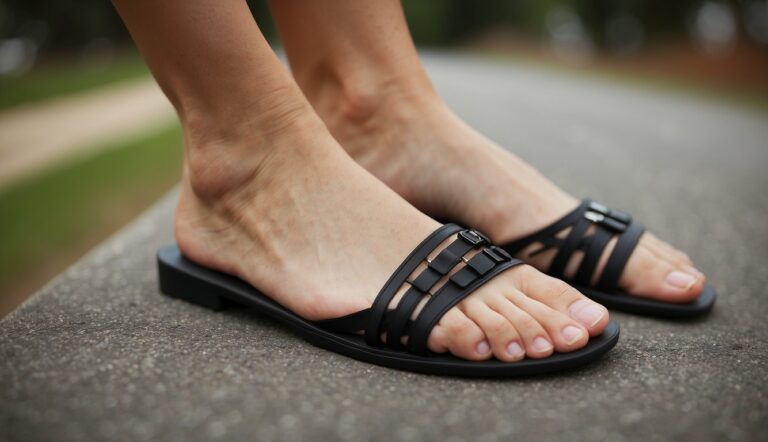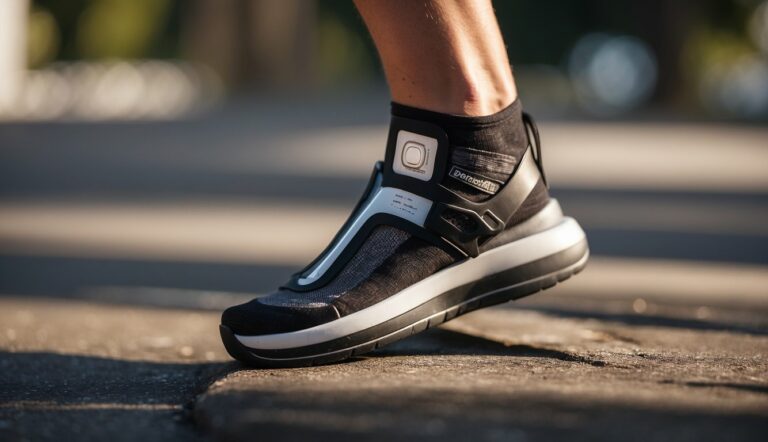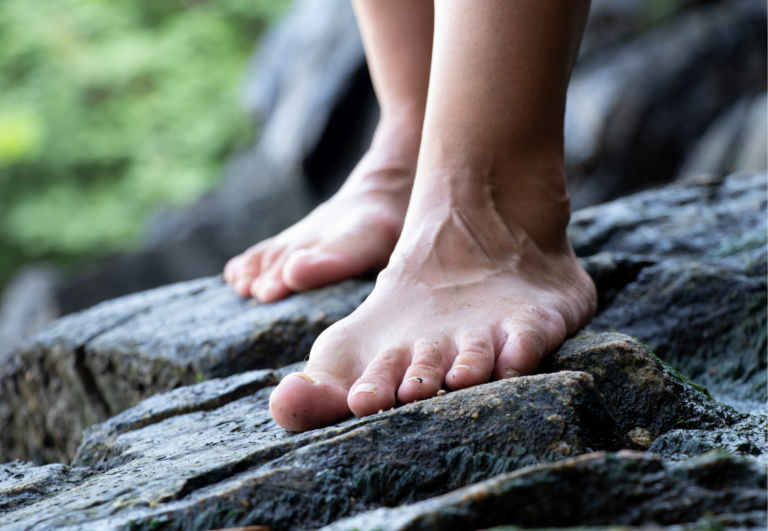How Toe Spacers Can Help With Calluses and Corns: Exploring the Benefits
Calluses and corns are often the result of chronic pressure and friction, conditions that can arise from misaligned toes or tightly-fitting shoes. As an expert on toe spacers, I’ve seen how these simple devices can make a significant difference. They work by gently separating the toes, thus redistributing your weight more evenly across your feet. This can decrease the targeted pressure on certain areas, helping to prevent the aggravation of existing calluses and corns, and potentially stopping new ones from forming.
Toe spacers are especially beneficial for those who spend a lot of time on their feet or are active in sports. The consistent use of toe spacers can help maintain proper toe alignment, which promotes better balance and foot function. By allowing the toes to spread naturally, toe spacers can alleviate the friction that often leads to the development of corns and calluses, offering a simple, non-invasive method to support foot health.
Understanding Toe Spacers and Their Role in Foot Health
Toe spacers offer a non-invasive solution to mitigate foot issues like calluses and corns by promoting proper toe alignment. The materials commonly used for toe spacers include silicon, silicone, gel, or foam, each known for their comfort and flexibility.
What Are Toe Spacers?
Toe spacers, sometimes referred to as toe separators or stretchers, are devices designed to be placed between the toes to maintain proper alignment and spacing. The common materials used to create toe spacers include:
- Silicon: Durable and easy to clean, often used for long-lasting wear.
- Silicone: Soft and flexible, providing a more comfortable fit for the foot.
- Gel: Cushioning and supportive, ideal for those who need additional comfort.
- Foam: Lightweight and compressible, but may not offer the same level of durability.
These materials are selected for their ability to conform to the foot while providing the necessary separation.
The Science Behind Toe Separation
Toe separation is based on the idea that by keeping toes apart, one can reduce the friction and pressure that commonly results in skin hardening, leading to calluses and corns. Here’s a brief breakdown of how toe spacers can contribute to foot health:
- Reduced Friction: Spacers decrease the contact between toes, thereby reducing the formation of calluses and corns.
- Improved Alignment: By keeping toes in their natural position, spacers may prevent or alleviate the discomfort from overlapping toes.
- Pressure Distribution: Properly aligned toes help in the even distribution of weight across the foot, potentially lessening the likelihood of calluses on pressure points.
The Benefits of Toe Spacers for Calluses and Corns
Toe spacers are designed to alleviate discomfort and help prevent the formation of calluses and corns by addressing the common causes: friction and pressure. These simple devices can be a cornerstone in maintaining foot health and providing pain relief.
How Toe Spacers Prevent Friction
Friction between toes often leads to the hardening of skin, resulting in calluses and corns. By wearing toe spacers:
- Reduced Skin Friction: I’ve noticed that they physically separate the toes, minimizing direct contact and thus reducing skin friction.
- Improved Toe Alignment: They promote a natural toe alignment, which further prevents the overlapping of toes that can cause skin abrasion.
Pressure Redistribution With Toe Spacers
Pressure exerted on toes can contribute to calluses and corns. Toe spacers play a crucial role in pressure redistribution:
- Even Pressure Distribution: They ensure that pressure is distributed more evenly across the foot, reducing concentrated pressure points that lead to callus and corn formation.
- Enhanced Foot Comfort: By correcting toe alignment, these spacers can improve overall foot comfort, making it easier to walk, stand, or run without exacerbating foot issues.
Additional Advantages of Toe Spacers
Toe spacers are not only for alleviating toe and foot pain; they offer a range of benefits, contributing to improved balance and mobility, and they can be supportive for various foot deformities.
Improving Balance and Mobility
Improving balance and mobility is crucial for everyday activities like standing, walking, and running. In my experience, by ensuring that toes are properly aligned and separated, toe spacers encourage a more natural toe spread. This can enhance proprioception — our body’s sense of itself in space — which contributes to better balance. For individuals with flat feet, which can affect stability, toe spacers can provide support by promoting proper foot structure and function.
- Key Benefits:
- Improved toe spread: allows for a more stable base when standing or moving.
- Enhanced proprioception: can lead to better overall balance and coordination.
Toe Spacers as a Support for Foot Deformities
Foot deformities, such as bunions (hallux valgus) and related conditions, often stem from or result in toe misalignment. I’ve found that regular use of toe spacers can assist in maintaining correct toe positioning. By doing so, they help to distribute pressure evenly across the foot, potentially delaying or improving discomfort from deformities. While they’re not a cure for such conditions, they can serve as a part of a comprehensive approach to managing foot health.
- Effective For:
- Bunions/hallux valgus: alleviating pressure on the joint.
- Preventing further misalignment: helping to stabilize the toes in their natural alignment.
Incorporating Toe Spacers into Foot Care Routines
Toe spacers are an effective tool I use for relieving the pressure on my feet, aiding in the management of calluses and corns. Incorporating them into your foot care routine, through both exercises and daily wear, can help improve toe alignment and overall foot health.
Exercise and Stretching
Exercise Routine:
- Toe Splay: With toe spacers fitted between each toe, I spread my toes as wide as possible, hold for a few seconds, and release. I repeat this 10 times to strengthen foot muscles.
- Yoga Toes: While sitting, I place toe spacers on and perform various foot-stretching yoga positions to enhance flexibility and strength.
Benefits:
- Increased strength: Toe spacers can aid in exercising the small muscles of the feet, leading to improved balance and stability.
- Improved flexibility: Regular stretching with toe spacers can help alleviate tightness and increase the range of motion.
Pedicure and Daily Wear
Pedicure Routine:
When giving myself a pedicure, I insert toe spacers not just to paint my nails perfectly but also to enjoy the added benefit of improved toe alignment and relief from the discomfort of foot conditions.
Daily Wear:
- Morning Routine: I begin by wearing toe spacers for 10-15 minutes as I prepare for my day, gradually increasing the duration for comfort.
- Evening Relaxation: After a long day, I wear toe spacers for 30 minutes to an hour while resting to provide a gentle stretch to my toes.
Selection Tips:
- Material: Look for toe spacers made of soft, flexible silicone for comfort and ease of use.
- Fit: Ensure the spacers fit snugly but not too tightly to avoid restricting circulation.
Through regular use and integration into my foot care regime, toe spacers assist in maintaining toe alignment and reducing the formation of corns and calluses.
Choosing the Right Toe Spacers

When looking for toe spacers to help with calluses and corns, the key is to find a balance between effective alignment and everyday comfort. I’ll guide you through choosing materials and ensuring a good fit.
Types and Materials
Toe spacers are primarily made from two types of materials: silicon and gel. Each material offers its benefits:
- Silicon toe spacers are firm yet flexible, often favored for their durability and long-term use.
- Gel toe spacers, on the other hand, tend to be softer and more pliable, providing a cushion-like effect that can be immediately comforting, especially if you’re dealing with sensitive corns or calluses.
Here’s a quick comparison:
| Material | Durability | Comfort Level |
|---|---|---|
| Silicon | High | Moderate |
| Gel | Moderate | High |
While there are also foam options available, they might not offer the same level of support and alignment as silicon and gel.
Fit and Comfort Considerations
The fit of toe spacers is crucial for their effectiveness and your comfort. They should fit snugly around your big toe and other toes without causing additional pressure. A proper fit can help realign your toes gently, distribute weight evenly, and prevent the formation of calluses and corns.
Comfort is paramount, so consider these points when selecting toe spacers:
- Size: Make sure to measure your toes or consult sizing charts to find the right fit for your feet.
- Big toe slot: Check if the toe spacer accommodates your big toe properly, as it often bears more weight and is a common area for calluses.
- Adjustability: Some toe spacers are adjustable, which can help you fine-tune the fit for better alignment and comfort.





